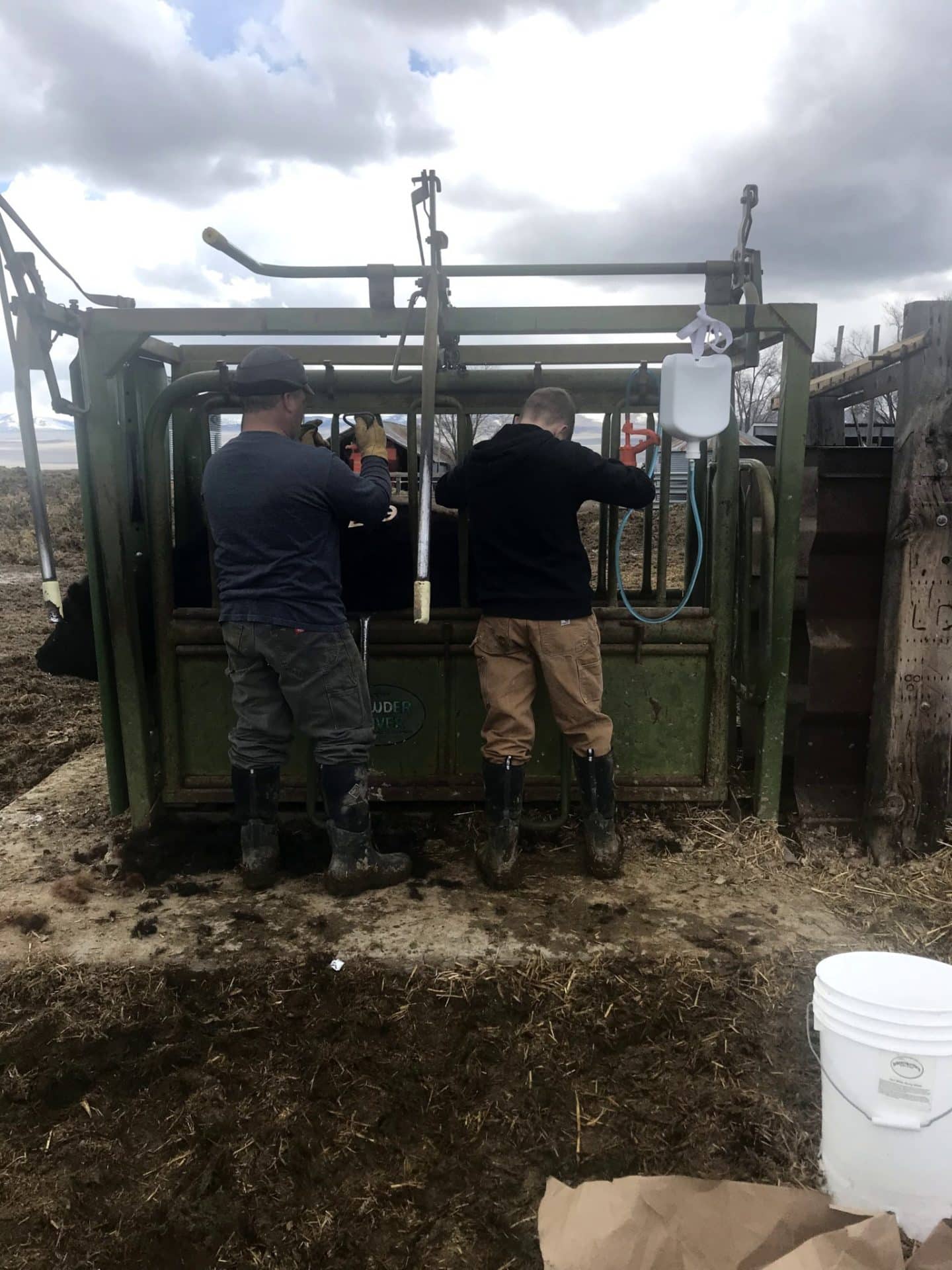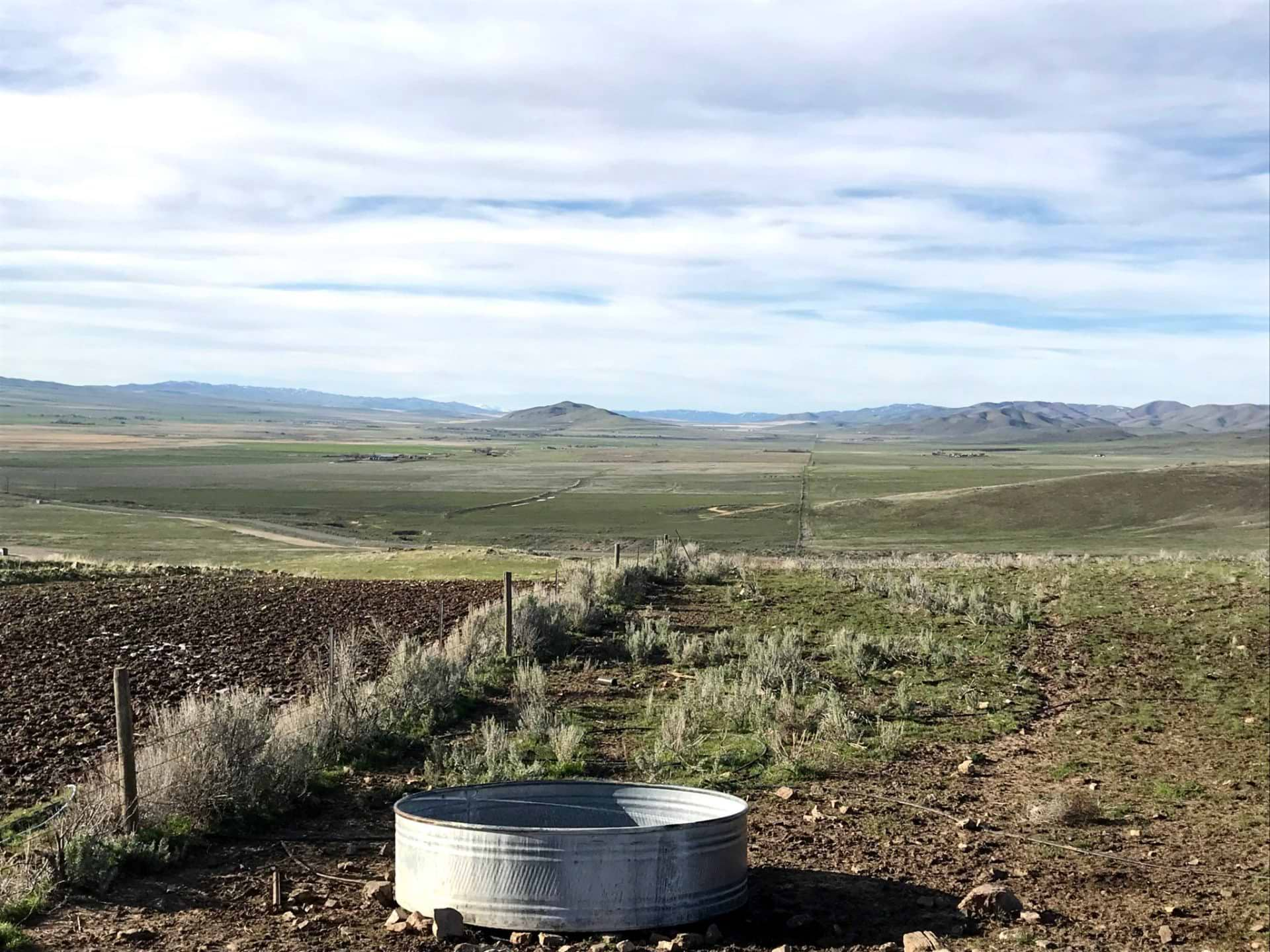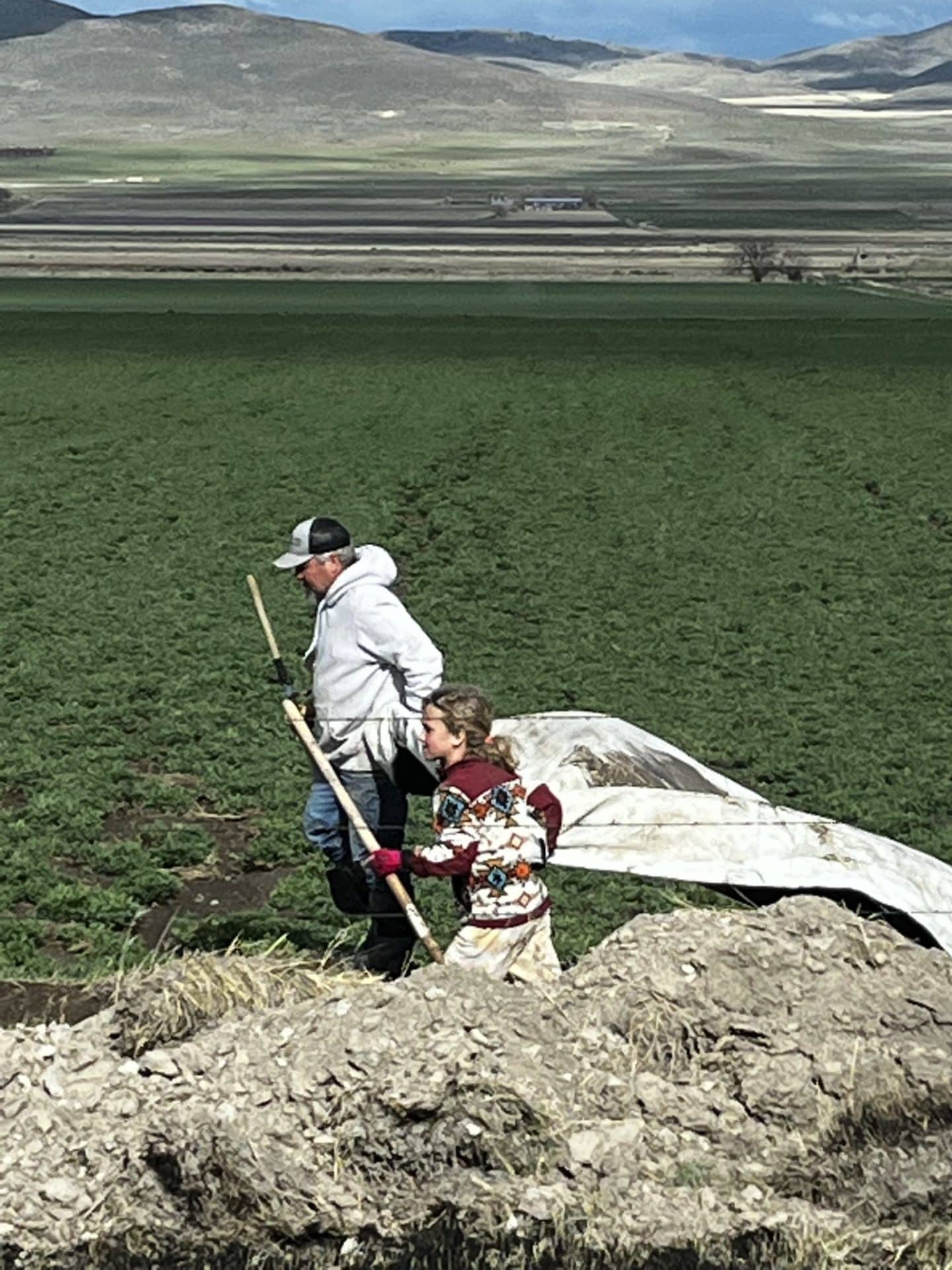Last updated on December 2nd, 2022 at 02:36 pm
Ranching in a Drought: It’s a Game of Cat and Mouse
Drought forced Tim Douglas to think differently. He’s glad he did.
MEET Tim Douglas

Howell, Utah
“Two years ago was bad. Last year was bad. This year (2022) is worse, and the calves are still doing very well. The cows are doing good, too.”
Drought and heavy weaning calves. Drought and contented cows. Those things go together about like a cat at a mouse convention. Things can go south in short order. Especially if you’re the mouse.
In a devastating drought, a rainless sky is the cat and farmers and ranchers are the mice. But it doesn’t have to be that way. Just ask Tim Douglas.
Record Drought
He’s the fifth generation to manage a 120-year-old family farm and ranch in northern Utah, near Howell. And he’s smack in the middle of a drought that the area hasn’t seen in perhaps ever. “The last couple of years have been record droughts,” he says.
“I can promise you this grass here, there is no new growth. We didn’t have anything this year, so dead grass from two years ago is all they’ve eaten this year.”
Given that, you’d expect light-weaning calves and lots of cows headed to the sale barn. However, for Douglas, the opposite happened.
“Three years ago, we were shipping calves on a 45-day wean through Superior,” he says. “They were shipping out the middle of December at 650, 660 pounds.” He shipped his 2022 calves the first of November weaned off the cows and they weighed 675 pounds.
Plus, he shipped more calves than he did three years ago. From the same number of cows. “I used to run about 5 to 7 percent death loss from birth until shipping them in the fall. These last two years, I’ve been running 1 percent. The sickness, the scours, the late season pneumonia, we don’t have any of that anymore,” he says.
Calving season starts in February, which is cold in northern Utah. “They’ll hit the ground and bounce right up and start sucking right away,” he says. “The cold doesn’t seem to bother them a bit.”
Something Else in the Mix

If connecting the dots between drought-hammered pastures and a higher performing calf crop seems a stretch, there must be something else in the mix. Some kind of foo-foo dust that has magical qualities.
There is, and there’s nothing magical about it. Nor is it foo-foo dust. It’s Riomax® mineral and vitamin tubs in front of the cows year-round.
“Low quality feed, the cows seem to be happy and content as can be on this dry grass,” he says. During the cold winter months from January into the first half of April, he feeds hay along with winter grass. “Before the Riomax, we just fed straight alfalfa. Now I’m blending a lot of straw, about 20 pounds of straw and 10 pounds of alfalfa.”
The alfalfa and wheat are home grown, but to figure costs correctly, Douglas takes the value that he could have sold the alfalfa for. At $300-a-ton alfalfa, he cut his feed cost significantly.
His cows, however, stay at a 5 to 6 body condition score year around. “I try to keep them in that 5, 6 body condition going into winter,” he says. “Even with a calf at their side, I don’t change the ration any. Their body weights, they’ve been maintaining.”
What’s more, he hasn’t had to cull any cows because of the drought. “The pastures seem to be lasting longer,” he says. Going into 2022, he was convinced he would have to sell some cows. But the pastures held up. “That’s because the cows were getting a little more out of the stuff than what she used to do.”

100% Calf Crop & Cow Contentedness
Some years back, Douglas tried Riomax® tubs for a year and got a 100 percent calf crop that spring. But the up-front cost scared him. So, he backed off, but the cows weren’t content and kept searching for that unobtainable greener grass on the other side of the fence.
“The cows didn’t look well feeding them straight alfalfa, they were never content. Finally, that’s when we came back to Riomax®. Had to look at it more as an investment.”
Indeed, he says you need to look at your ranch goals differently when considering adding Riomax® to the mix. “The way I did the math last year, and I figured it at $200-per-ton feeder hay. I put up my own hay, but that’s hay I could have sold. It made me about $150,000 last year feeding the Riomax® versus not using it,” he says.
“Worst case scenario, you’re at breakeven on it and your cows are in better shape than normal. They’re more content. The cows don’t get out anymore the way they used to.” Time is money. And fixing fences or treating sick calves takes time.
And his neighbors are noticing. “It seems to be taking off. Neighbors, they start looking at it,” he says. So, he and a neighboring rancher, Nick Richards, went together on a load of the orange tubs. Then two more neighbors wanted in.
Douglas is now a LITE dealer for Riomax®. “We’ll order it all together in semi loads and then distribute it from my place,” he says. Ordering it in quantities for both him and his neighbors allow them to take the volume discount, he says.
To say Douglas is happy that he overcame his sticker shock and added Riomax® to his operation is an understatement. “The buyer from Superior, he claims every year the calves get a little better,” Douglas says. “But this year, he said they were some of the nicest calves he’d shipped in this entire area.”
Not bad for running cows on pastures that haven’t grown a green blade of grass.










